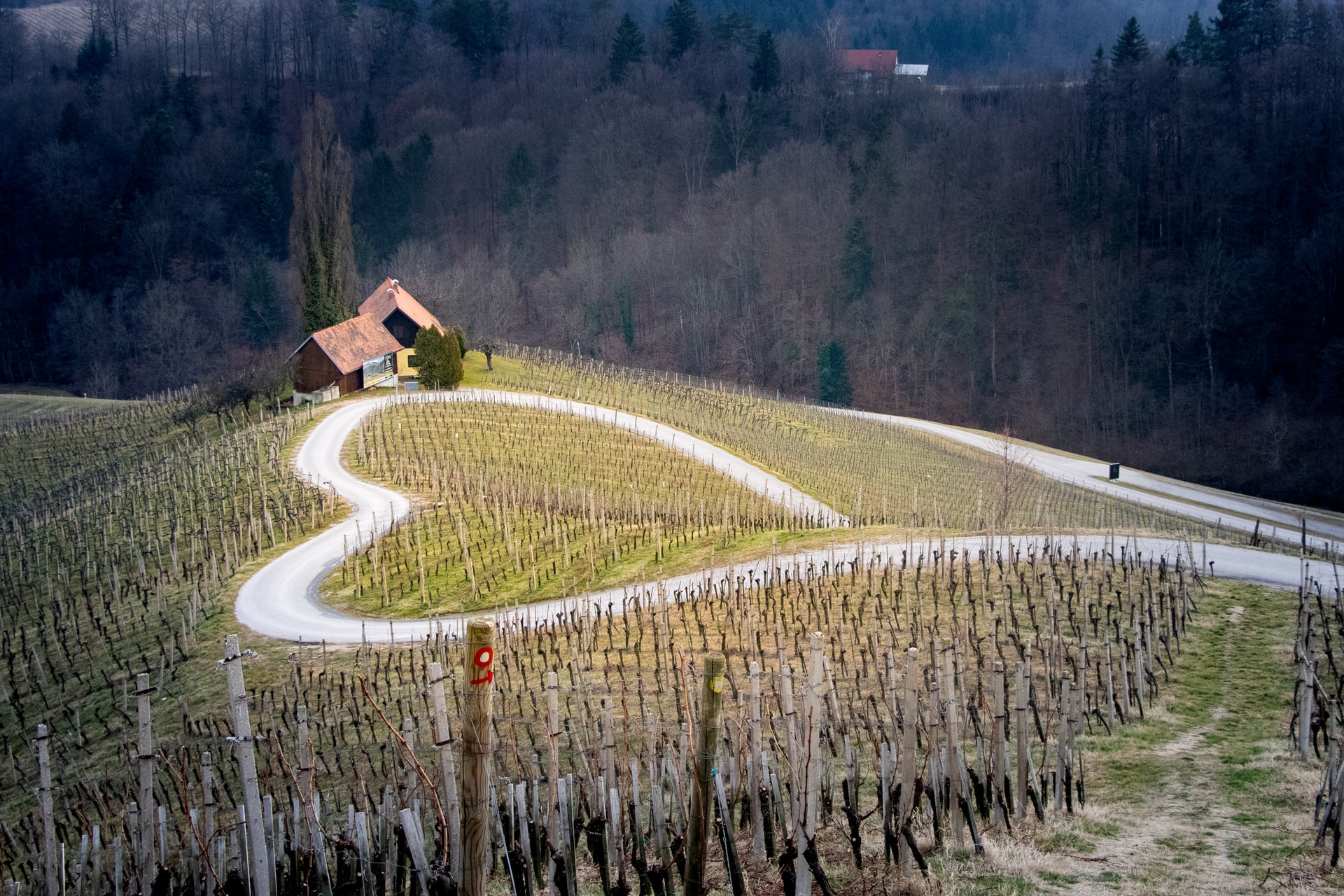
Wine is love; from production to consumption.
Let’s get this out of the way quickly: For most of us, 2020 was a uniquely difficult and depressing year. To 2020, we say, good riddance.
And yet, 2020 was also a year in which small pleasures and simple delights took on a greater significance than ever before. Perhaps it was a book, a film, an album, a meal, or, yes, a bottle of wine–these tiny lifelines helped sustain us when we most needed it.
At Paul Marcus Wines, we sincerely hope you found your way through these trying times. With that in mind, we are happy to share with you our favorite wines of the year. Sure, it’s only wine. But these are the bottles that brought us just a bit of sunshine in an otherwise gloomy year.
A Personal Selection, A Personal Position (Polemic?)
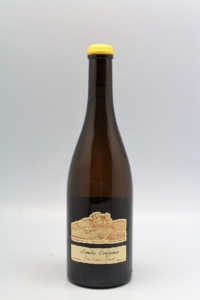 After 25 years working in the wine business, I have found that I am drawn to wines that excite my intellectual interest, but also provide both visceral and emotional response. Wines that are natural, wines that are products of the land–farmed and raised accordingly. Though it is always true that ethics and responsibility in our daily choices are vital at all levels of societal interaction, it seems to me that they are especially important as we look back on 2020.
After 25 years working in the wine business, I have found that I am drawn to wines that excite my intellectual interest, but also provide both visceral and emotional response. Wines that are natural, wines that are products of the land–farmed and raised accordingly. Though it is always true that ethics and responsibility in our daily choices are vital at all levels of societal interaction, it seems to me that they are especially important as we look back on 2020.
So, in that spirit, to pick a single wine is, for me, impossible, and further not in line with my thinking at this juncture. So my favorite wine of the year is really my favorite producer of the year: Jean-François Ganevat. While I am always excited about his wines–no matter the region, variety, or blend–my subjective self is happily subsumed, though not lost, in the larger concern. I have tried to widen my perspective amid the concerns of the pandemic and worldwide racial and economic disparity.
Founded in 1650, Dom. Ganevat makes approximately 75 different wines, 57 of which are listed for sale at Kermit Lynch, Ganevat’s California importer. Furthermore, an unknown and perhaps unknowable number of additional cuvees do not make it out of France, and of the ones that do hit our shores, many with a 25 percent tariff, very few see the shelf. That said, we do have a few wines, about 15 or so–none of them, however, in any real quantity. But, wow, they are stupendously exciting. And delicious. Natural, yes, some include purchased fruit, but no matter if Jean-François is buying from similarly minded friends and neighbors.
Aside from being delicious, sensual wines, perhaps the greatest virtue of his wines is that so much is given to the drinker. It helps to be open-minded, to not go in expecting to find your absolute favorite wine. That is the way all “outdoor” wine works; we can’t always sell you your favorite wine. We all need variation. What I can tell you is that these are exactly what they should be, meaning no more than what was intended or hoped-for by M. Ganevat.
I only tasted with him once, around an old barrel in a deep cellar. He is kind, if overwhelmed with attention, and pours generously, and yes, it is difficult to keep them all straight. But it is certainly worth picking up a bottle or two–if you can find them!
–Chad Arnold
Island Charm
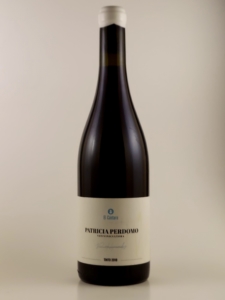 Patricia Perdomo’s eponymous wines are something to behold. At a scant 26 years of age, she already runs a bodega with her sister, Lucía, also a viticulturist and farmer. Their family has been growing vines in La Palma (Canary Islands) for generations, and, in my humble opinion, their knowledge of the land and its indigenous varieties certainly shows in the 2018 Perdomo ‘El Cantaro’ cuvee.
Patricia Perdomo’s eponymous wines are something to behold. At a scant 26 years of age, she already runs a bodega with her sister, Lucía, also a viticulturist and farmer. Their family has been growing vines in La Palma (Canary Islands) for generations, and, in my humble opinion, their knowledge of the land and its indigenous varieties certainly shows in the 2018 Perdomo ‘El Cantaro’ cuvee.
‘El Cantaro’ is a field blend of 35 percent listan negro, 30 percent listan prieto, 25 percent negramoll, and 10 percent albillo criollo. The 85-year-old vines grow at 3,600 feet of altitude on volcanic soils, where the high altitude and dry weather provide conditions hospitable to practicing organic viticulture. The wine itself is highly reductive, with some sanguine notes and gravity-defying black fruits. This is a wine of Burgundian finesse made by two sisters from a wild, rugged island off the coast of Africa. Only 100 cases were produced, and the containers just came in. Get some while you can.
–Heather Mills
Slice of Sicily
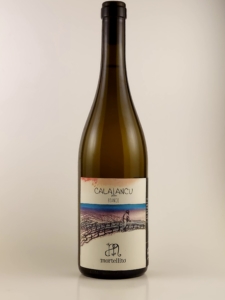 My favorite wine this year is like a breath of fresh air sailing off the Mediterranean waters, near Noto, in the southeastern corner of Sicily.
My favorite wine this year is like a breath of fresh air sailing off the Mediterranean waters, near Noto, in the southeastern corner of Sicily.
The 2019 Mortellito Bianco Sicilia Calaiancu is a young-vine blend of mainly grillo and a bit of catarratto, naturally fermented in stainless steel and aged for only six months in stainless as well. It has a rustic edge, as you might imagine, since the person who made it is what some might call “salt of the earth.” Think mandarin and lemon blossoms, coupled with pistachios, melons, and olives.
This wine reveals such an unexpected kaleidoscope of smells and flavors. It has a subtle richness, or perhaps, generosity, while at the same time having a nervy spine of refreshing acidity. The limestone-rich soils lend the wine a lifted minerality and moderate alcohol–thankfully, considering the warmth of the climate. Drink this with anything from fresh seafood to pizza–maybe a white anchovy pizza with marjoram or grilled swordfish with lemon–and let the wine shine!
–Jason Seely
Deep Balance
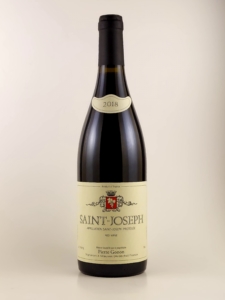 My most pleasurable wine memory from 2020 was courtesy of a syrah from Pierre Gonon, an iconic producer in France’s Rhone valley. The 2017 Gonon Saint-Joseph was delicious and compelling in aromatics, texturally lush and rich and lifted and tannic all at once. It was young and buoyant and simultaneously had that deep balance and structure that communicates it would age with great grace.
My most pleasurable wine memory from 2020 was courtesy of a syrah from Pierre Gonon, an iconic producer in France’s Rhone valley. The 2017 Gonon Saint-Joseph was delicious and compelling in aromatics, texturally lush and rich and lifted and tannic all at once. It was young and buoyant and simultaneously had that deep balance and structure that communicates it would age with great grace.
But what made it memorable was how much pleasure it brought to all four of us at the table. The white-wine drinkers were confused that they liked it so much; the big red drinkers were just blown away. Wine is better with company, and great wines really demand it. It makes me look forward to next year’s great bottles.
–David Gibson
Love in Lirac
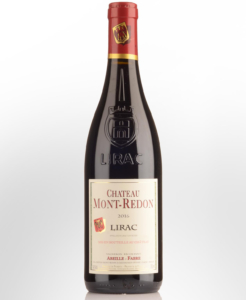 Any favorite wine of mine must meet two very important requirements: high quality and reasonable price. Yes, I might greatly enjoy a bottle of Pommard or Barolo; however, if I cannot afford to drink a bottle of great Burgundy or Barolo on a regular basis, why should it be my favorite?
Any favorite wine of mine must meet two very important requirements: high quality and reasonable price. Yes, I might greatly enjoy a bottle of Pommard or Barolo; however, if I cannot afford to drink a bottle of great Burgundy or Barolo on a regular basis, why should it be my favorite?
As with every consumer good, the price of wine is not always delineated strictly by the quality of the product, but also depends on operating cost, R&D, and, of course, name recognition.
This brings me to Lirac, and the 2016 Château Mont-Redon Lirac. Everyone has heard of Châteauneuf-du-Pape, but how many have heard of Lirac? Although Lirac is less than seven miles away from Châteauneuf-du-Pape–with almost identical soil types and a similar climate–Lirac remains in the shadows. So if you are ever looking for a dense, earthy, and complex wine similar to Châteauneuf-du-Pape, but for half the price, look no further than Lirac.
This grenache-based wine begs for a steak pairing, with a fully tannic body that is powerful yet elegant, a medium nose that is dark and spicy, and subtle notes of blackberry and coffee. This is the perfect full-bodied yet unobtrusive wine to pair with a savory meal (or enjoy on a cold winter night). The oak influence gives the wine a smooth finish, with slight notes of vanilla. Best of all, it is drinkable this year! I recommend this bottle with a nice fat burger or rib-eye steak. It’s also quite enjoyable while watching a good movie by yourself, with the heater on.
–Hayden Dawkins
High in Chianti
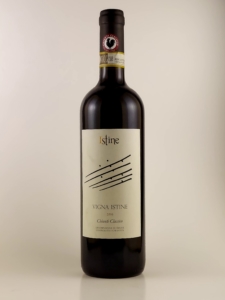 Overshadowed by Montalcino and hampered by an outdated reputation, Chianti continues to fight back with a vengeance, consistently producing satisfying, versatile, relatively affordable wines. With Angela Fronti at the helm, Istine is at the forefront of Chianti’s renaissance.
Overshadowed by Montalcino and hampered by an outdated reputation, Chianti continues to fight back with a vengeance, consistently producing satisfying, versatile, relatively affordable wines. With Angela Fronti at the helm, Istine is at the forefront of Chianti’s renaissance.
Balanced, nuanced, graceful, and simply gorgeous, the 2016 Istine ‘Vigna Istine’ Chianti Classico is a single-vineyard sangiovese from a craggy, high-elevation (550 meters) plot in the forests outside of Radda. Fronti’s grandfather was in the business of vineyard construction, a business her family maintains today, but even her family had second thoughts about the four-hectare site, planted almost 20 years ago. Says importer Oliver McCrum, “Her brother told me that this vineyard site was so rocky and difficult to clear that they would have bailed on any other customer.”
The ‘Vigna Istine’ is fermented in a combination of stainless steel and concrete before spending about a year in large Slovenian oak. Vibrant, floral, herbaceous, and brightly red-fruited, with a freshness that belies its depth, this is a prized example of expressive, supple sangiovese, anchored by ample acidity and a gentle tannic embrace.
–Marc Greilsamer
Bouzy Rouge
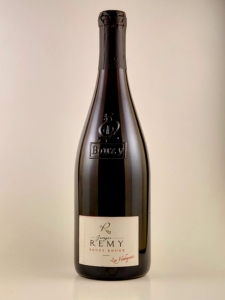 My favorite wine discoveries are often the underdogs, the unsung, the undeservedly obscure, the outliers. And so it is for my favorite wine of this year: the 2015 Georges Remy Bouzy Rouge ‘Les Vaudayants.’
My favorite wine discoveries are often the underdogs, the unsung, the undeservedly obscure, the outliers. And so it is for my favorite wine of this year: the 2015 Georges Remy Bouzy Rouge ‘Les Vaudayants.’
Astute bubble-lovers will recognize Bouzy as a Grand Cru village in the Champagne sub-region of Montagne de Reims. Bouzy is famous for its pinot noir, most of which is made into Champagne. But luckily for us, the bouzillons (as locals are called) reserve a few bunches of their prized pinot for still wines. The formal appellation for un-bubbly wines made in Champagne is Coteaux Champenois (“slopes of Champagne”), but Bouzy Rouge is just so much more fun to say!
The wine is from a single parcel of organically farmed, 45-year-old vines. It’s aged for 21 months in used barrels and then bottled unfined and unfiltered. It’s elegant and even ethereal, while still having weight and presence on the palate. Imagine a vinous line drawn from the Côte de Beaune, through Marsannay, and then projected north a couple hundred kilometers to the latitude of Paris.
The 2015 vintage was exceptional in Champagne, as it was in Burgundy, and this wine now shows the benefit of several more years in bottle. The wine opens beautifully over time, so don’t rush it! Drink it over several hours, preferably in a Burgundy stem or other large wine glass, with duck, braised meats, or simply with gougères or a mild, semi-aged cheese. Then you, too, will be an honorary bouzillon.
–Mark Middlebrook
Cooperative Class
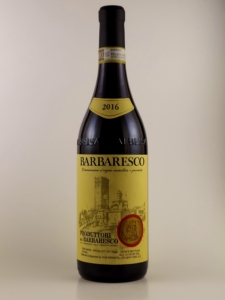 As the Italian buyer at PMW, I’ve made it a priority this year to recognize the brilliance of Barbaresco (in addition to its Barolo neighbor). I am pleased, therefore, to select the 2016 Barbaresco from Produttori del Barbaresco as my wine of the year. It is, pound for pound, price for quality, one of the greatest wines in the shop.
As the Italian buyer at PMW, I’ve made it a priority this year to recognize the brilliance of Barbaresco (in addition to its Barolo neighbor). I am pleased, therefore, to select the 2016 Barbaresco from Produttori del Barbaresco as my wine of the year. It is, pound for pound, price for quality, one of the greatest wines in the shop.
The Produttori is a venerable cooperative cantina with an important place in the history of the Langhe, dating back to 1894. The winery was forced to close during the fascist period of the 1930s, but managed to re-emerge in the postwar era. In 1958, the local priest helped restart production, with the first three vintages being made in the church basement across the old square where the Produttori stands today.
Nowadays, the Produttori enjoys a reputation as one of the very best producers in the region. If you are skeptical that a cooperative winery can achieve the heights of a great independent producer, these wines will quickly dispel that notion.
When Paul and I visited the Langhe a couple of years ago, we were excited to taste a good number of wines from the wonderful 2015 vintage, and they are indeed amazing. But we had several old-timers tell us that 2016 is the greatest vintage that they have ever experienced. The 2016 Barbaresco from Produttori certainly supports that contention. With beautiful fruit, and notes of cherry and anise, it is a lovely, inviting wine already. But it is also backed with a classic structure that will allow it to age gracefully for many years. Antonio Galloni, of the excellent publication Vinous, finished his laudatory review of the 2016 by saying simply, “What a wine!” I couldn’t agree more.
As an additional invitation, we would like to offer our customers a very special opportunity to check out the stunning 2015 Riserva Crus from the Produttori. The 2015 vintage is magnificent as well–so lush that they deliver immediate pleasure, yet capable of developing tremendous complexity over time. Through the month of January, PMW customers will receive 10 percent off of single bottles of these marvelous Crus and 15 percent off of six bottles or more. This will allow you to taste the Riserva wines for only a slightly higher price than the “normale.” Each Riserva is distinctive, and they are fascinating to compare and contrast.
(For more information about the various Crus, please visit the Produttori del Barbaresco website.)
–Joel Mullennix
Under the Volcano
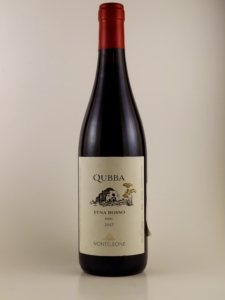 My favorite wine of the year, the 2017 Monteleone Etna Rosso, comes from vineyards at the base of Sicily’s Mount Etna, on the north side at about 500 meters. The nose is beguiling; hard to define, but charming nonetheless. The nerello mascalese grape provides all the clean, earthy, mineral notes and red fruits of this light-colored wine, while a small amount of nerello cappuccio provides some depth to the hue. What I love about this wine is its vivacious life. The flavors sing on your palate; silky yet mildly gritty, it is an extremely versatile wine that matches well with duck.
My favorite wine of the year, the 2017 Monteleone Etna Rosso, comes from vineyards at the base of Sicily’s Mount Etna, on the north side at about 500 meters. The nose is beguiling; hard to define, but charming nonetheless. The nerello mascalese grape provides all the clean, earthy, mineral notes and red fruits of this light-colored wine, while a small amount of nerello cappuccio provides some depth to the hue. What I love about this wine is its vivacious life. The flavors sing on your palate; silky yet mildly gritty, it is an extremely versatile wine that matches well with duck.
Sadly, the 2017 vintage is gone, but luckily, we do have a few bottles of the single-vineyard ‘Qubba’ cuvee, which has plenty of years ahead of it. Beyond that, we look forward to the 2018 vintage.
–Paul Marcus
If you’d like to know more about any of these selections, please call or visit us at the shop. And don’t forget, our entire inventory is available online (for curbside pickup or shipping) at shop.paulmarcuswines.com.
Happy holidays from PMW, and please stay safe!
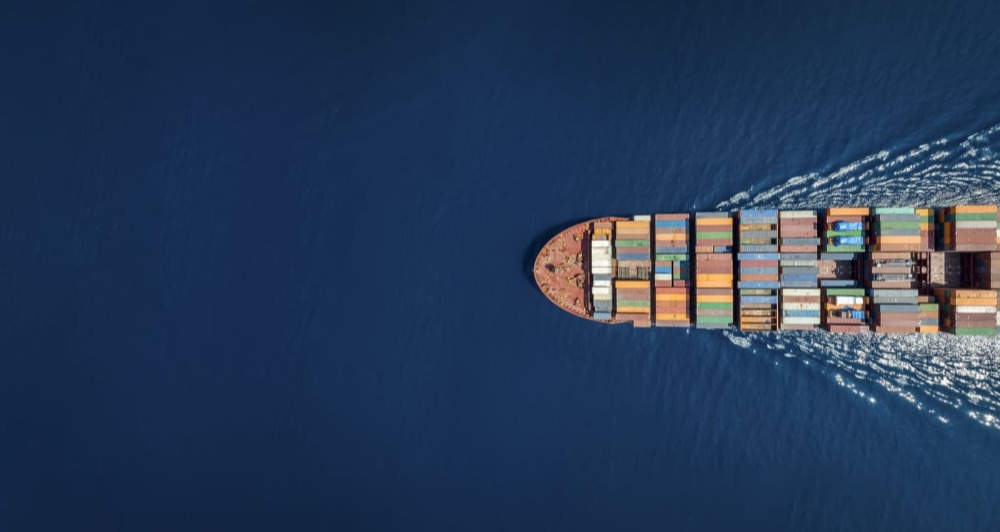 With an increase in demand for value wines, we have been stuffing the Value Red and Value White sections to the brim. Located in the front of the store, these are our weeknight favorites–and our weekend porch-pounders. Of course, this is just a starting place, and there are many bottles in the $20 range tucked away throughout the shop.
With an increase in demand for value wines, we have been stuffing the Value Red and Value White sections to the brim. Located in the front of the store, these are our weeknight favorites–and our weekend porch-pounders. Of course, this is just a starting place, and there are many bottles in the $20 range tucked away throughout the shop.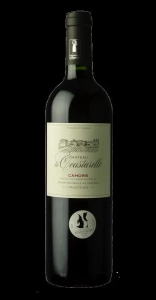

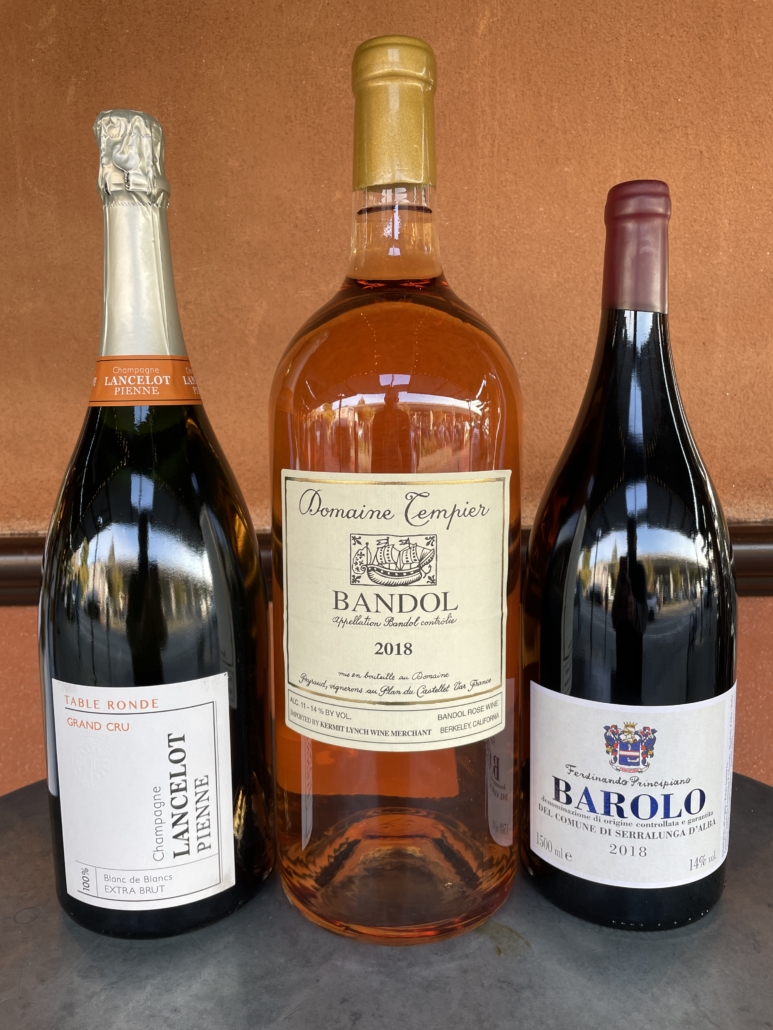
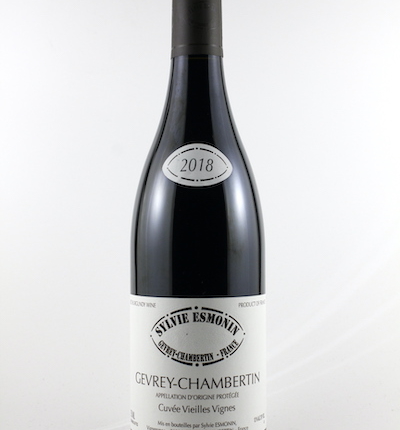
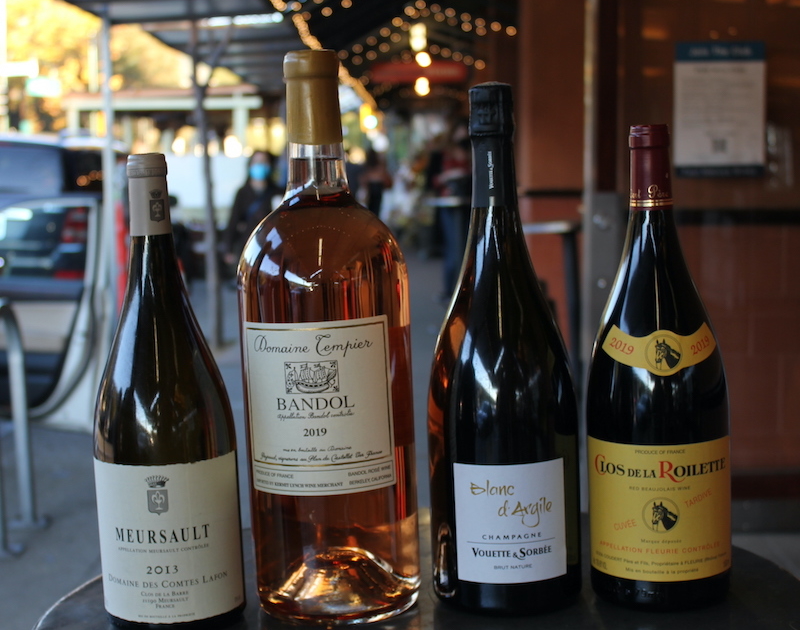
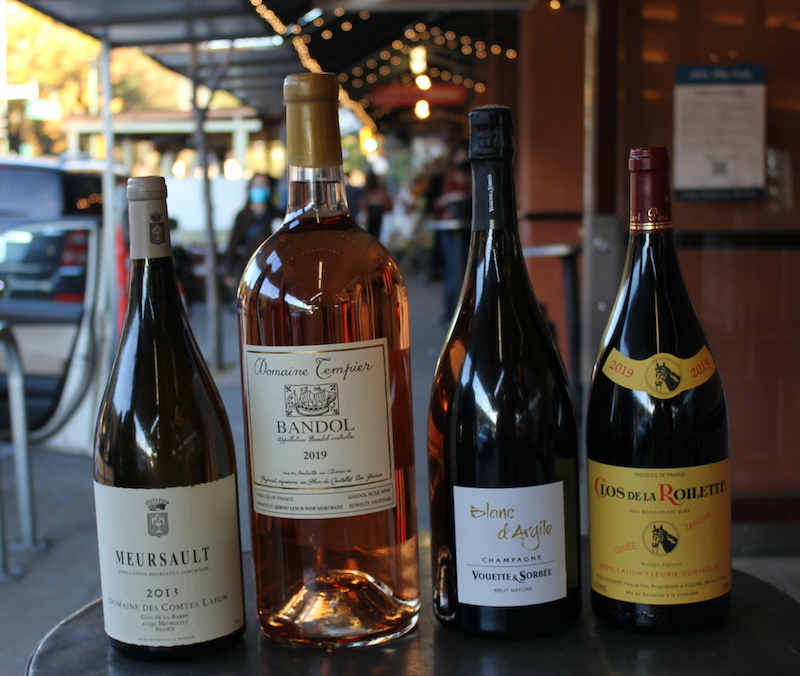
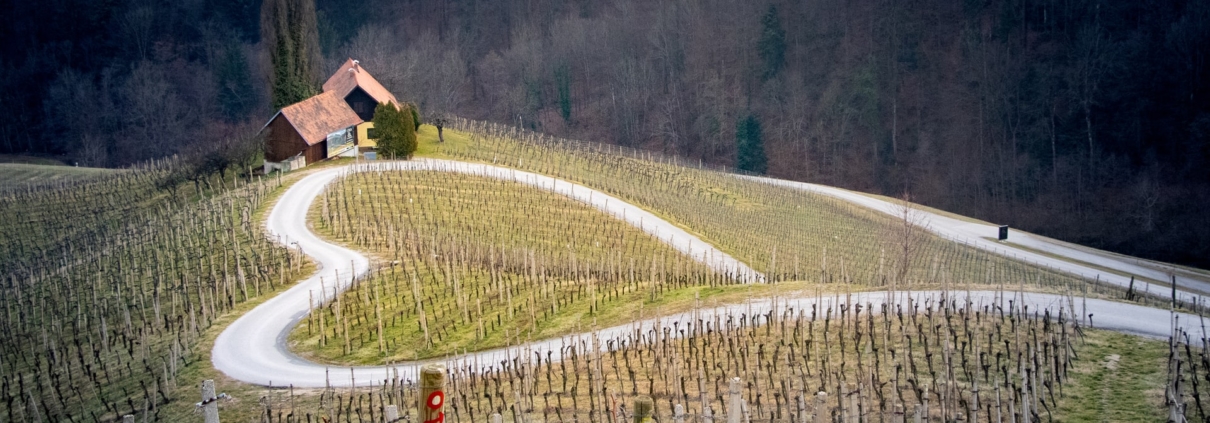

 After 25 years working in the wine business, I have found that I am drawn to wines that excite my intellectual interest, but also provide both visceral and emotional response. Wines that are natural, wines that are products of the land–farmed and raised accordingly. Though it is always true that ethics and responsibility in our daily choices are vital at all levels of societal interaction, it seems to me that they are especially important as we look back on 2020.
After 25 years working in the wine business, I have found that I am drawn to wines that excite my intellectual interest, but also provide both visceral and emotional response. Wines that are natural, wines that are products of the land–farmed and raised accordingly. Though it is always true that ethics and responsibility in our daily choices are vital at all levels of societal interaction, it seems to me that they are especially important as we look back on 2020. Patricia Perdomo’s eponymous wines are something to behold. At a scant 26 years of age, she already runs a bodega with her sister, Lucía, also a viticulturist and farmer. Their family has been growing vines in La Palma (Canary Islands) for generations, and, in my humble opinion, their knowledge of the land and its indigenous varieties certainly shows in the 2018 Perdomo ‘El Cantaro’ cuvee.
Patricia Perdomo’s eponymous wines are something to behold. At a scant 26 years of age, she already runs a bodega with her sister, Lucía, also a viticulturist and farmer. Their family has been growing vines in La Palma (Canary Islands) for generations, and, in my humble opinion, their knowledge of the land and its indigenous varieties certainly shows in the 2018 Perdomo ‘El Cantaro’ cuvee. My favorite wine this year is like a breath of fresh air sailing off the Mediterranean waters, near Noto, in the southeastern corner of Sicily.
My favorite wine this year is like a breath of fresh air sailing off the Mediterranean waters, near Noto, in the southeastern corner of Sicily. My most pleasurable wine memory from 2020 was courtesy of a syrah from Pierre Gonon, an iconic producer in France’s Rhone valley. The 2017 Gonon Saint-Joseph was delicious and compelling in aromatics, texturally lush and rich and lifted and tannic all at once. It was young and buoyant and simultaneously had that deep balance and structure that communicates it would age with great grace.
My most pleasurable wine memory from 2020 was courtesy of a syrah from Pierre Gonon, an iconic producer in France’s Rhone valley. The 2017 Gonon Saint-Joseph was delicious and compelling in aromatics, texturally lush and rich and lifted and tannic all at once. It was young and buoyant and simultaneously had that deep balance and structure that communicates it would age with great grace. Any favorite wine of mine must meet two very important requirements: high quality and reasonable price. Yes, I might greatly enjoy a bottle of Pommard or Barolo; however, if I cannot afford to drink a bottle of great Burgundy or Barolo on a regular basis, why should it be my favorite?
Any favorite wine of mine must meet two very important requirements: high quality and reasonable price. Yes, I might greatly enjoy a bottle of Pommard or Barolo; however, if I cannot afford to drink a bottle of great Burgundy or Barolo on a regular basis, why should it be my favorite? Overshadowed by Montalcino and hampered by an outdated reputation, Chianti continues to fight back with a vengeance, consistently producing satisfying, versatile, relatively affordable wines. With Angela Fronti at the helm, Istine is at the forefront of Chianti’s renaissance.
Overshadowed by Montalcino and hampered by an outdated reputation, Chianti continues to fight back with a vengeance, consistently producing satisfying, versatile, relatively affordable wines. With Angela Fronti at the helm, Istine is at the forefront of Chianti’s renaissance. My favorite wine discoveries are often the underdogs, the unsung, the undeservedly obscure, the outliers. And so it is for my favorite wine of this year: the 2015 Georges Remy Bouzy Rouge ‘Les Vaudayants.’
My favorite wine discoveries are often the underdogs, the unsung, the undeservedly obscure, the outliers. And so it is for my favorite wine of this year: the 2015 Georges Remy Bouzy Rouge ‘Les Vaudayants.’ As the Italian buyer at PMW, I’ve made it a priority this year to recognize the brilliance of Barbaresco (in addition to its Barolo neighbor). I am pleased, therefore, to select the 2016 Barbaresco from Produttori del Barbaresco as my wine of the year. It is, pound for pound, price for quality, one of the greatest wines in the shop.
As the Italian buyer at PMW, I’ve made it a priority this year to recognize the brilliance of Barbaresco (in addition to its Barolo neighbor). I am pleased, therefore, to select the 2016 Barbaresco from Produttori del Barbaresco as my wine of the year. It is, pound for pound, price for quality, one of the greatest wines in the shop. My favorite wine of the year, the 2017 Monteleone Etna Rosso, comes from vineyards at the base of Sicily’s Mount Etna, on the north side at about 500 meters. The nose is beguiling; hard to define, but charming nonetheless. The nerello mascalese grape provides all the clean, earthy, mineral notes and red fruits of this light-colored wine, while a small amount of nerello cappuccio provides some depth to the hue. What I love about this wine is its vivacious life. The flavors sing on your palate; silky yet mildly gritty, it is an extremely versatile wine that matches well with duck.
My favorite wine of the year, the 2017 Monteleone Etna Rosso, comes from vineyards at the base of Sicily’s Mount Etna, on the north side at about 500 meters. The nose is beguiling; hard to define, but charming nonetheless. The nerello mascalese grape provides all the clean, earthy, mineral notes and red fruits of this light-colored wine, while a small amount of nerello cappuccio provides some depth to the hue. What I love about this wine is its vivacious life. The flavors sing on your palate; silky yet mildly gritty, it is an extremely versatile wine that matches well with duck.

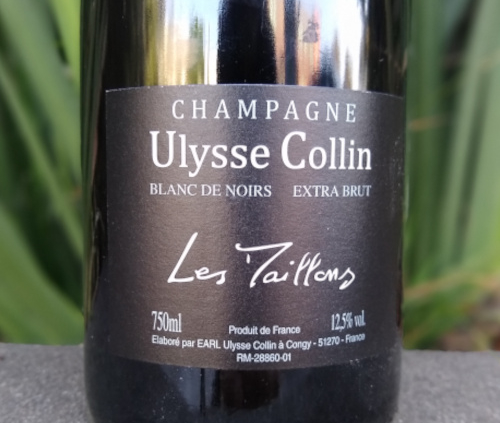
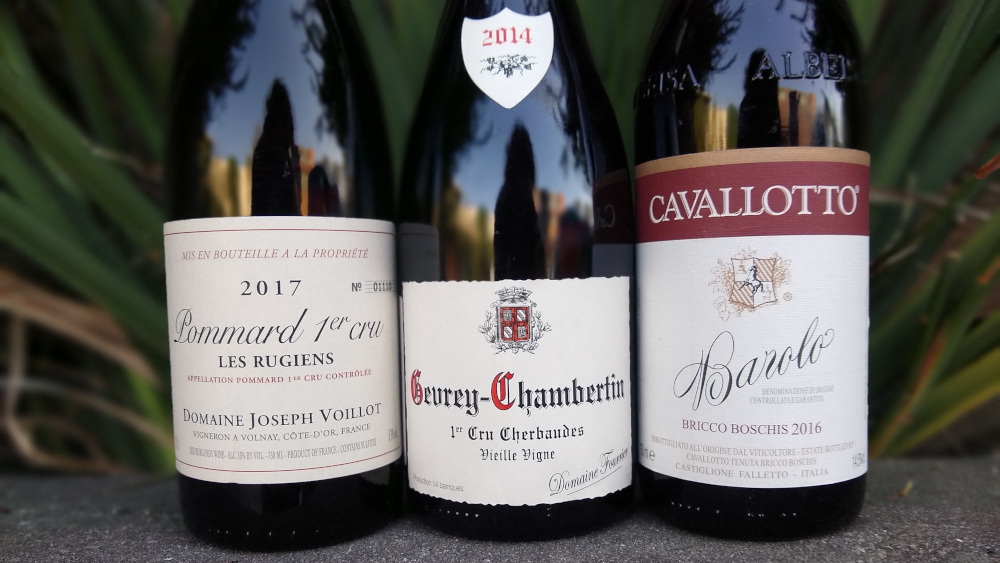
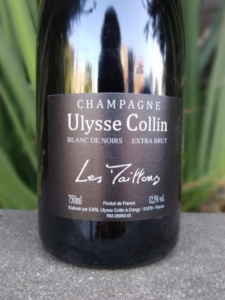 …you’re at my house for a dinner party. We’re on the deck. It’s about 7:15, and the Champagne is, sadly, though not tragically, nearly gone. And while everyone is enjoying it, some of us are sort-of-secretly hoping a brave soul will socially distance the bottle and save the remaining third until we’ve had time to try the trousseau. Surely, the Champagne will taste different after a glass of snappy fall-fruit red from the Jura.
…you’re at my house for a dinner party. We’re on the deck. It’s about 7:15, and the Champagne is, sadly, though not tragically, nearly gone. And while everyone is enjoying it, some of us are sort-of-secretly hoping a brave soul will socially distance the bottle and save the remaining third until we’ve had time to try the trousseau. Surely, the Champagne will taste different after a glass of snappy fall-fruit red from the Jura.
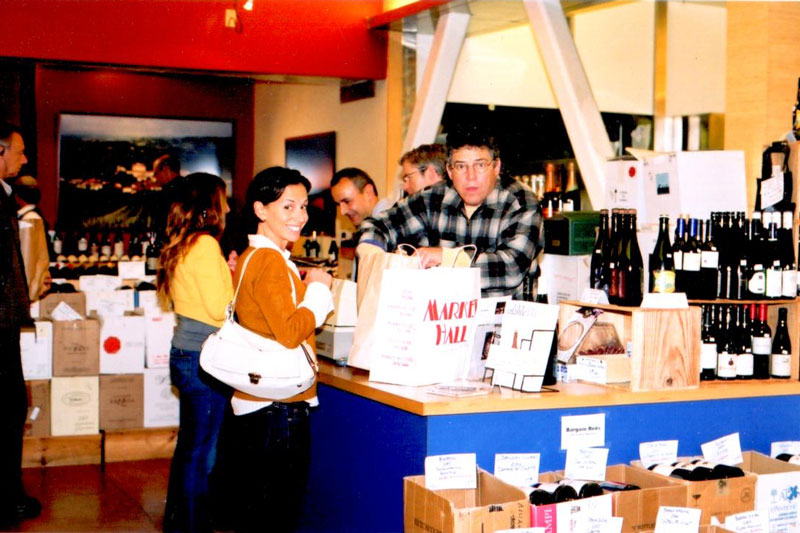

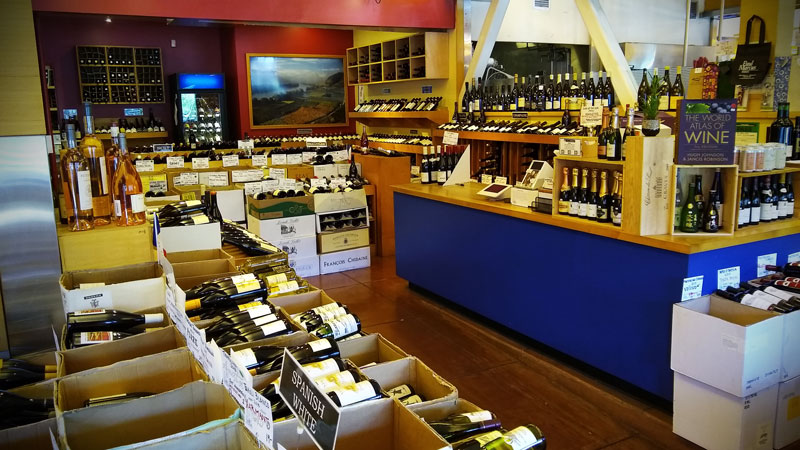
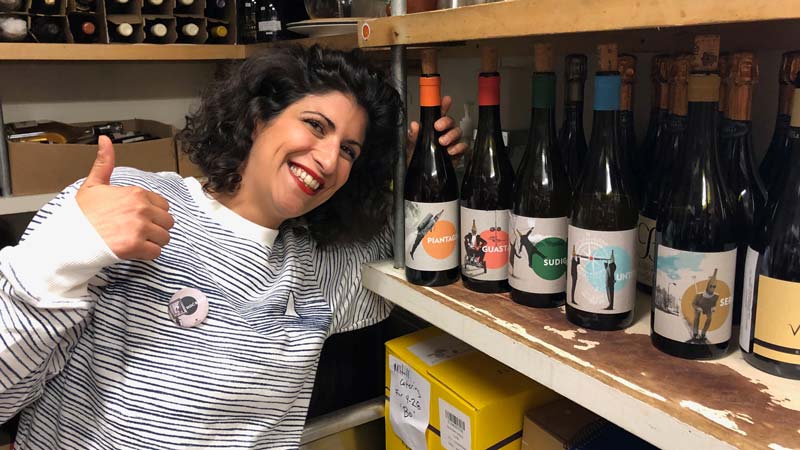
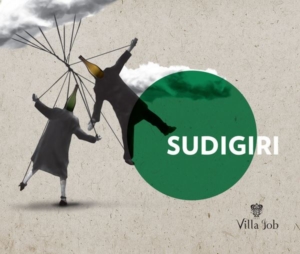 2017 Villa Job “Sudigiri” Venezia Giulia Sauvignon Blanc
2017 Villa Job “Sudigiri” Venezia Giulia Sauvignon Blanc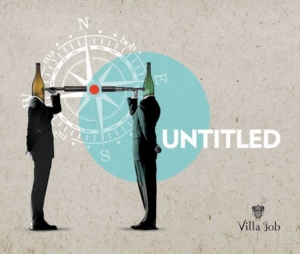 2017 Villa Job “Untitled” Venezia Giulia Friulano
2017 Villa Job “Untitled” Venezia Giulia Friulano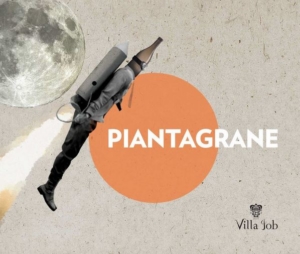 2017 Villa Job “Piantagrane” Friuli Grave Pinot Grigio
2017 Villa Job “Piantagrane” Friuli Grave Pinot Grigio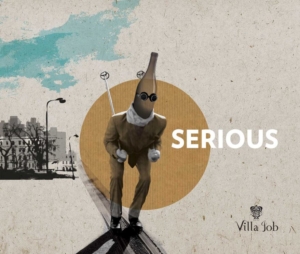 2017 Villa Job “Serious” Venezia Giulia Refosco dal Peduncolo Rosso
2017 Villa Job “Serious” Venezia Giulia Refosco dal Peduncolo Rosso